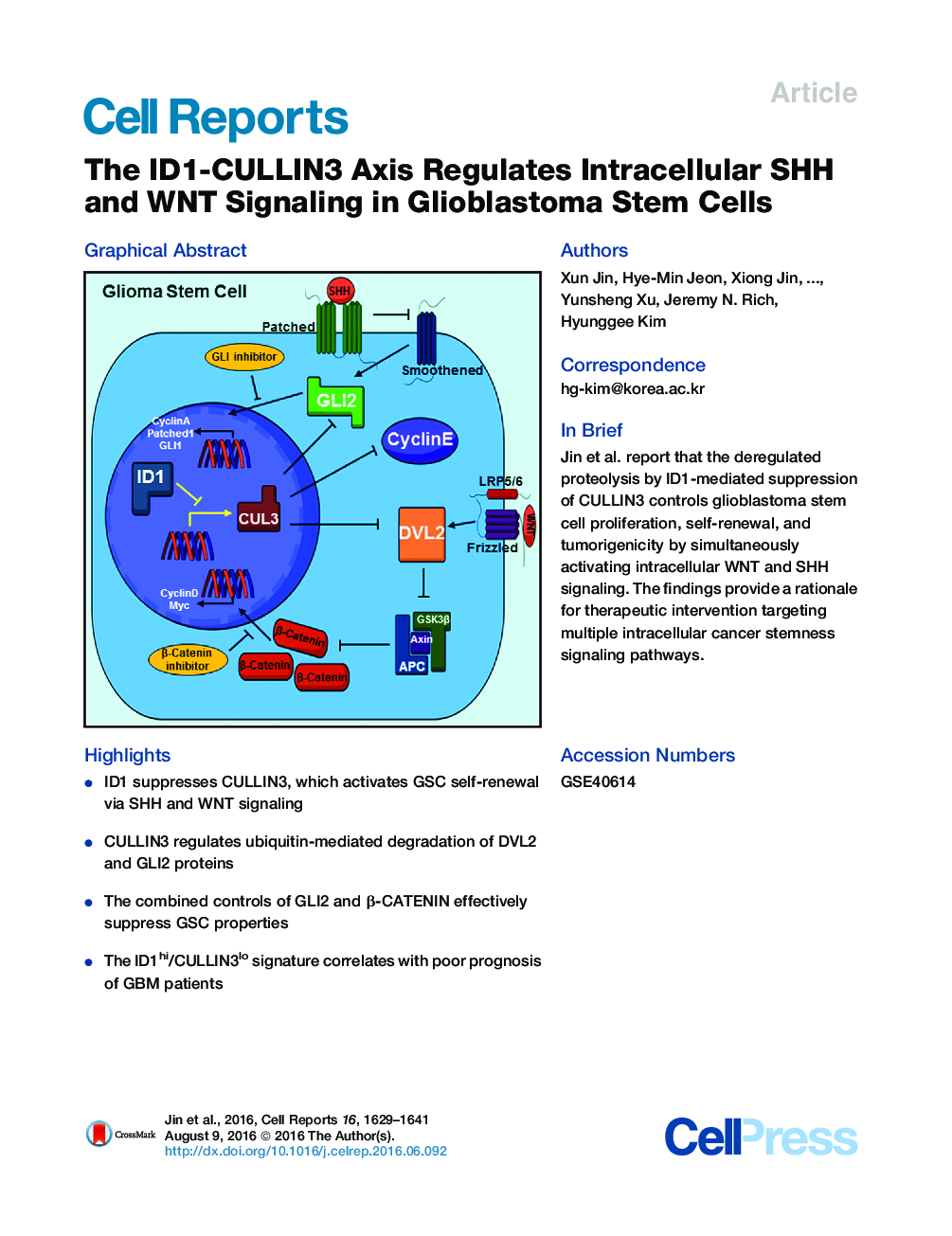| Article ID | Journal | Published Year | Pages | File Type |
|---|---|---|---|---|
| 2039999 | Cell Reports | 2016 | 13 Pages |
•ID1 suppresses CULLIN3, which activates GSC self-renewal via SHH and WNT signaling•CULLIN3 regulates ubiquitin-mediated degradation of DVL2 and GLI2 proteins•The combined controls of GLI2 and β-CATENIN effectively suppress GSC properties•The ID1hi/CULLIN3lo signature correlates with poor prognosis of GBM patients
SummaryInhibitor of differentiation 1 (ID1) is highly expressed in glioblastoma stem cells (GSCs). However, the regulatory mechanism responsible for its role in GSCs is poorly understood. Here, we report that ID1 activates GSC proliferation, self-renewal, and tumorigenicity by suppressing CULLIN3 ubiquitin ligase. ID1 induces cell proliferation through increase of CYCLIN E, a target molecule of CULLIN3. ID1 overexpression or CULLIN3 knockdown confers GSC features and tumorigenicity to murine Ink4a/Arf-deficient astrocytes. Proteomics analysis revealed that CULLIN3 interacts with GLI2 and DVL2 and induces their degradation via ubiquitination. Consistent with ID1 knockdown or CULLIN3 overexpression in human GSCs, pharmacologically combined control of GLI2 and β-CATENIN effectively diminishes GSC properties. A ID1-high/CULLIN3-low expression signature correlates with a poor patient prognosis, supporting the clinical relevance of this signaling axis. Taken together, a loss of CULLIN3 represents a common signaling node for controlling the activity of intracellular WNT and SHH signaling pathways mediated by ID1.
Graphical AbstractFigure optionsDownload full-size imageDownload as PowerPoint slide
